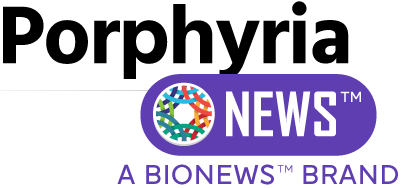Givosiran Treatment Leads to 74% Drop in Acute Hepatic Porphyria Attacks, Phase 3 Data Show

Treatment with investigational RNA-based therapy givosiran can safely reduce the annual incidence of acute hepatic porphyria (AHP) attacks, according to final results from a Phase 3 clinical trial.
These positive results from the ENVISION trial are intended to support the application for regulatory approval that givosiran’s manufacturer Alnylam Pharmaceuticals is planning to submit to the U.S. Food and Drug Administration and European Medicines Agency in mid-2019.
“Given the high unmet need in this disease setting, we are very pleased for the patients and families living with acute hepatic porphyria for whom these results signal hope for a potential new therapeutic option,” Akshay Vaishnaw, MD, PhD, president of research and development at Alnylam, said in a press release. “We firmly believe givosiran has the potential to be a transformative medicine for patients living with AHP.”
The Phase 3 ENVISION trial (NCT03338816) enrolled 94 participants with AHP, of whom 95% had acute intermittent porphyria, at 36 clinical centers across 18 countries.
Approximately 40% of patients were receiving standard therapy (hemin prophylaxis) before entering the trial, and about 52% experienced daily chronic symptoms between AHP attacks. Liver disease, chronic kidney disease, peripheral nerve damage, and iron overload were among the complications experienced by the patients.
Patients were randomly assigned to receive injections of givosiran or a placebo for six months. During this period, the researchers evaluated the incidence of acute disease episodes requiring hospitalization, urgent healthcare, or hemin administration. They also assessed the overall safety and tolerability profile of the treatment and patients’ health-related quality of life.
Givosiran was able to reduce the mean annual rate of AHP attacks by 74%, compared with placebo. This resulted in a median of one attack per year requiring hospitalization, urgent care, or hemin treatment in givosiran-treated patients compared with a median of 10.7 attacks per year reported in the placebo group.
Positive effects of the treatment were reported across different patient subgroups. These included patients who were undergoing hemin prophylactic (preventive) therapy prior to givosiran, those with chronic symptoms, and those who had a clinical history of high attack rates, with a significant drop in the annual AHP attack rate of 77%, 60%, and 73%, respectively.
Further analysis also showed that treatment with givosiran could effectively and rapidly induce a decrease in the median levels of urinary aminolevulinic acid (ALA) by 92% and of porphobilinogen (PBG) by 89%, compared with before starting the treatment. ALA and PBG are two hallmark biomarkers of active disease.
“The results from ENVISION are promising and demonstrate a strong treatment effect for givosiran,” said Manisha Balwani, MD, principal investigator of the trial. “Thus, givosiran represents a novel and targeted treatment approach that has the potential to make a significant impact on the lives of patients who are struggling with the disabling symptoms of this disease.” Balwani is an associate professor at the Icahn School of Medicine at Mount Sinai.
Most of the patients treated with givosiran (89%) reported an improvement in overall health status, according to data collected by the Patient Global Impression of Change (PGIC) Questionnaire, compared with 37% of those on placebo.
In addition, 72% of the patients said they were satisfied with the overall outcome of the treatment, improving their ability to do daily tasks, as determined by the Porphyria Patient Experience Questionnaire (PPEQ), compared with those on placebo (14%). Moreover, more patients taking givosiran reported improvements in traveling for work or pleasure, participating in social activities, or doing household chores, compared with patients on placebo.
After completing the six-month treatment period, 99% of ENVISION participants decided to continue treatment with givosiran in a 30-month open-label extension study. The high patient adherence to the treatment further supports the potential this new therapy represents for this population.
During the trial, givosiran showed a good safety profile, with a slightly higher incidence of adverse events in the givosiran-treated group (89.6%) than in the placebo arm (80.4%). Although no new safety issues were identified, more cases of serious adverse events were reported in the givosiran group than in placebo group, at 20.8% versus 8.7%.
Three treatment-related adverse events were reported — fever, abnormal liver function, and one case of chronic kidney disease. The most common adverse effects reported in the givosiran group were nausea, injection site reactions, kidney impairment, and fatigue.






